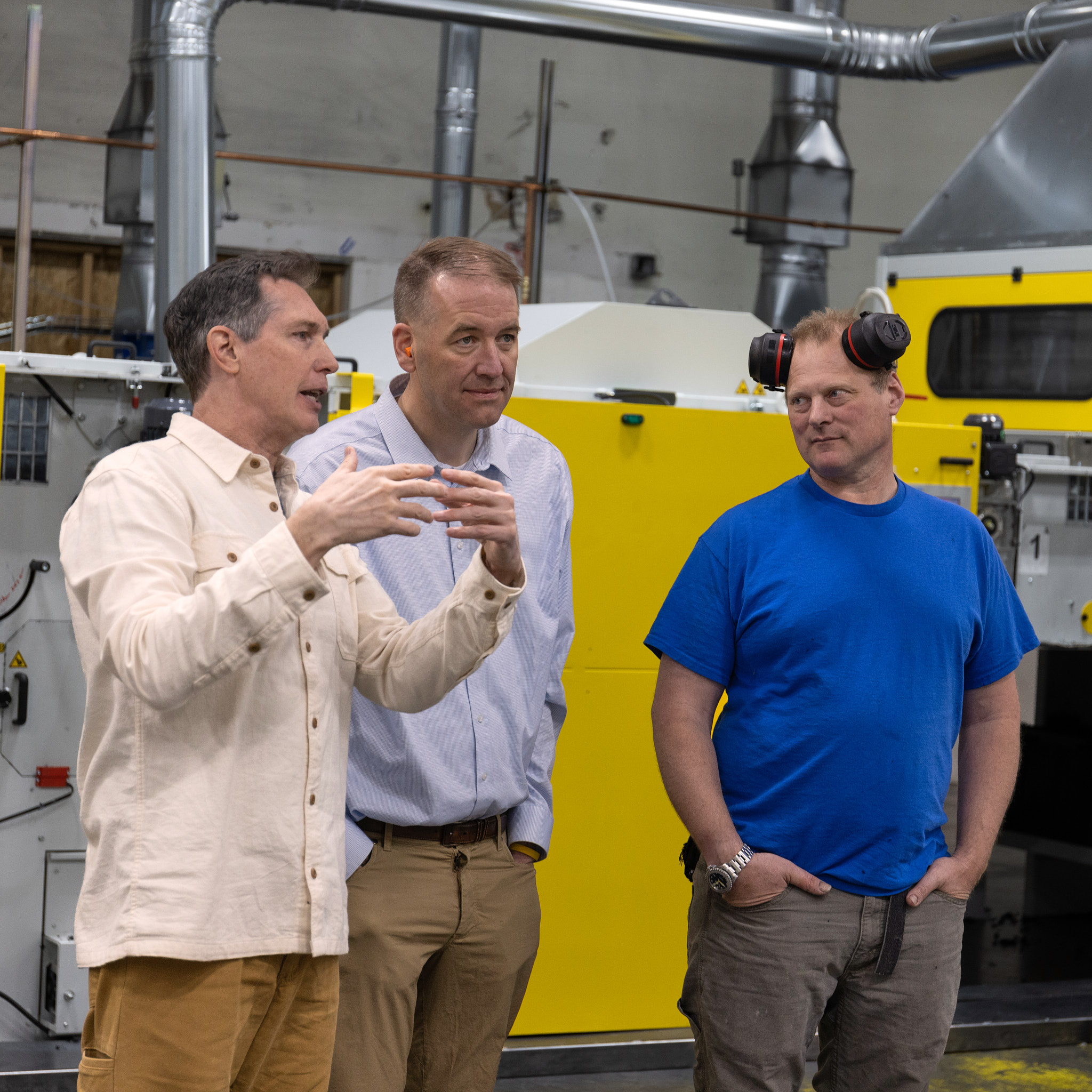
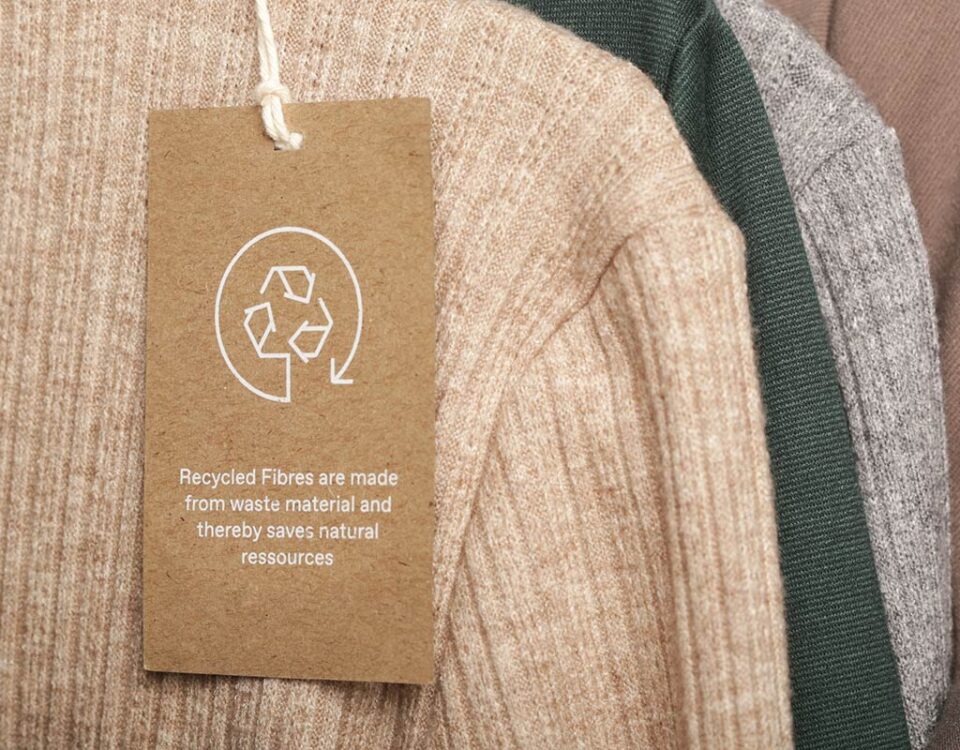
As kids, many of us imagined 2030 with flying cars and life on Mars. Reality looks different—but in many ways, more promising. One major shift is how people think about what they wear. Today, clothing choices reflect a deeper care for the planet and for one another.
Now that we’ve reached the halfway point of the decade, real change is underway. Together, clothing makers, wearers, and innovators are driving action to reduce emissions, conserve water, and prevent textiles from ending up in landfills. Based on the latest research, here are seven predictions for the apparel industry by 2030.
As climate change brings more extreme weather, apparel companies are focusing on environmental, social, and governance (ESG) practices.
A recent McKinsey & Company survey showed that many industry leaders consider ESG their top challenge and highest priority.
According to Coherent Market Insights, the sustainable fashion market could grow from $7.8 billion today to $33 billion by 2030.
This growth comes from two forces: consumers seeking sustainable options and new rules that push companies to reduce harm.
The Sustainable Fashion Forum predicts brands will move beyond temporary “eco” collections to long-term, impactful partnerships that center sustainability.
Recycling textiles into new fiber is gaining momentum. This process, called fiber-to-fiber recycling, supports a truly circular economy.
Fashion for Good’s Sorting for Circularity USA Project found that 56% of discarded textiles could be recycled this way.
If adopted at scale, this could create $1.5 billion in yearly value while reducing landfill waste and resource use.
According to forecasts, the global textile recycling market will grow from $4.35 billion to $6.13 billion by 2030.
Cotton will lead the shift, with mechanical recycling becoming more common than chemical methods.
Circular design begins with intention. The Ellen MacArthur Foundation offers a clear vision for circular fashion that benefits people and planet.
In a circular system, products are designed to last longer, be reused, and eventually, be remade into something new.
Key principles include:
Both the Sustainable Fashion Forum and Global Fashion Agenda predict that circular models will unlock new revenue streams for brands.
Instead of encouraging endless buying, brands will build loyalty through care, repair, and shared values.
Equity and dignity must be part of fashion’s future. The FABRIC Act, recently reintroduced in the U.S. Senate, is one step forward.
If passed, it would protect garment workers’ rights, strengthen local manufacturing, and hold brands accountable for labor practices.
Advocacy groups expect similar laws worldwide. As public awareness grows, brands will be pressured to treat workers fairly.
By 2030, experts predict global standards will be in place for fair wages, safe conditions, and channels for worker feedback.
A thriving fashion industry must support the people behind the products.
The industry is moving away from harmful materials toward sustainable alternatives. More brands are rethinking what goes into their products.
The European Climate Pact predicts leather-like materials made from cactus, apples, and other plants will become widely available.
Recycled polyester from post-consumer plastics will likely become the norm, replacing virgin polyester in many product lines.
By 2030, responsibly sourced and regenerative materials will take center stage, including cotton, wool, and synthetic fibers.
This shift supports healthier ecosystems and stronger local economies.
Misinformation about sustainability has eroded trust. In response, stricter rules are on the horizon to address greenwashing.
In the coming years, expect clear definitions of sustainability terms and greater accountability in brand claims.
Consumers are asking smarter questions and demanding real impact, not empty marketing.
Regulations will help standardize what sustainability means and ensure brands back up their claims with data.
This transparency will empower people to make informed, values-aligned choices.
See our recent post about California’s SB-707 bill.
Digital tools are helping people participate in a circular economy more easily. These tools are already changing how we shop and care for clothes.
Digital sampling lets shoppers try items virtually, reducing returns and unnecessary waste.
Other platforms connect users to local repair and rental services, making it easier to extend a product’s life.
Digital Product Passports (DPPs), now expanding in Europe, offer even more insight.
These QR-coded tags enable consumers to learn about the origin of products, their manufacturing process, and how to repair or recycle them.
By 2030, DPPs will likely be standard in many regions, bringing transparency to every step of a garment’s journey.
The next five years hold incredible potential for meaningful change in fashion. But we can’t do it alone.
Building a circular future requires everyone: designers, producers, recyclers, advocates, educators, and policy leaders.
At Looptworks, we’re proud to be part of this movement. Our fiber-to-fiber recycling services help businesses reduce waste and create a lasting impact.
Ready to be part of the change? Let’s work together to design a future where nothing goes to waste.
We’d love to hear from you!
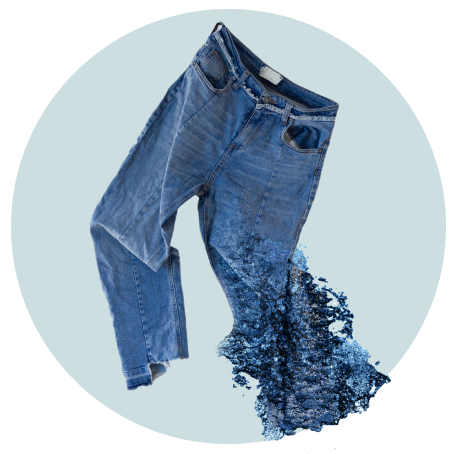

Denine has over 20 years of experience driving new business opportunities for leading companies, including E.I. DuPont de Nemours & Company, Inc., The Dow Chemical Company, Outlast Technologies, and DST Systems. She holds a BS from the University of Pittsburgh and a Certification in Executive Management from the Kenan-Flagler School of Business at the University of North Carolina at Chapel Hill.

Tami is a senior accounting leader with over 16 years of experience in the manufacturing and textile industry. Her specialties include process development and implementation, mergers and acquisitions, job and project costing and analysis, and managing complex teams and technical projects. Tami has served as Chief Financial Officer and Controller for a variety of innovative companies, where her analytical skills and strategic mindset helped organizations create efficiencies in their financial systems.
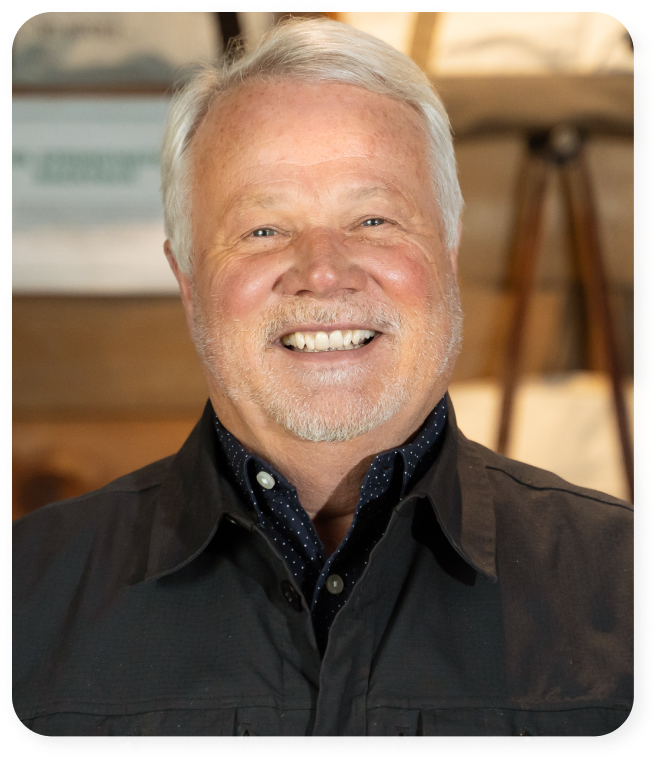
Kelley is a passionate and strategically minded business development leader with more than two decades of experience in the sporting goods apparel industry. He has experience in product construction, league partnerships, retail relationships, supply chain management, sustainability, circularity, and carbon footprint management. Kelley builds successful partnerships by putting the customer first while simultaneously advancing his organization’s business objectives.

Suzy is a product leader and operations expert with more than 25 years of experience in the textile industry. She is passionate about finding creative solutions to complex problems and motivating people to action through vision, strategy, collaboration, and communication. Suzy has proven expertise in product development, sustainability, marketing, supply chains, and innovating processes and best practices to drive results.
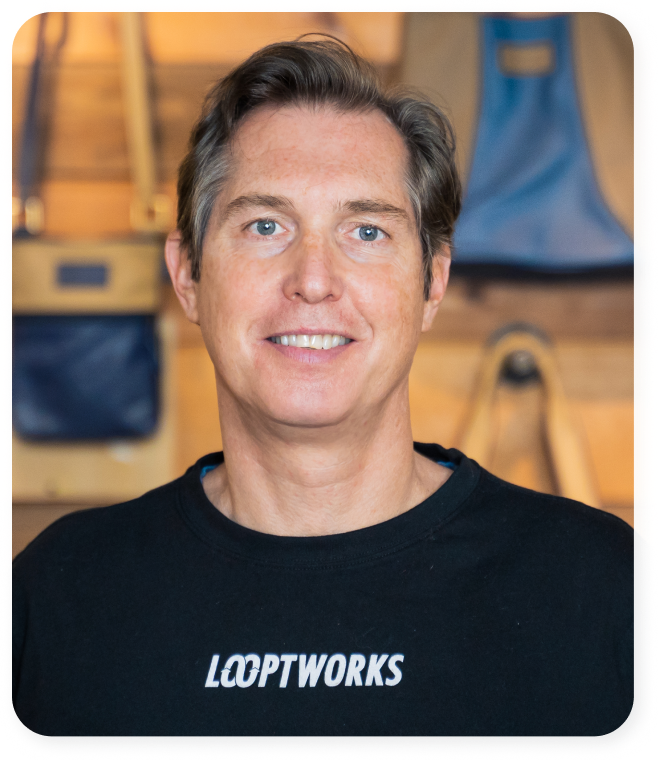
Scott is a visionary leader with more than 32 years of experience in strategic branding, innovative product creation, supply chain sustainability, and sales and marketing for global organizations. He founded Looptworks in 2009 as an industry solution for turning excess materials into upcycled consumer products. In 2022, Scott transitioned the company to a B2B business model focused on eliminating global textile waste through closed-loop solutions.

Scott is a visionary leader with more than 32 years of experience in strategic branding, innovative product creation, supply chain sustainability, and sales and marketing for global organizations. He founded Looptworks in 2009 as an industry solution for turning excess materials into upcycled consumer products. In 2022, Scott transitioned the company to a B2B business model focused on eliminating global textile waste through closed-loop solutions.